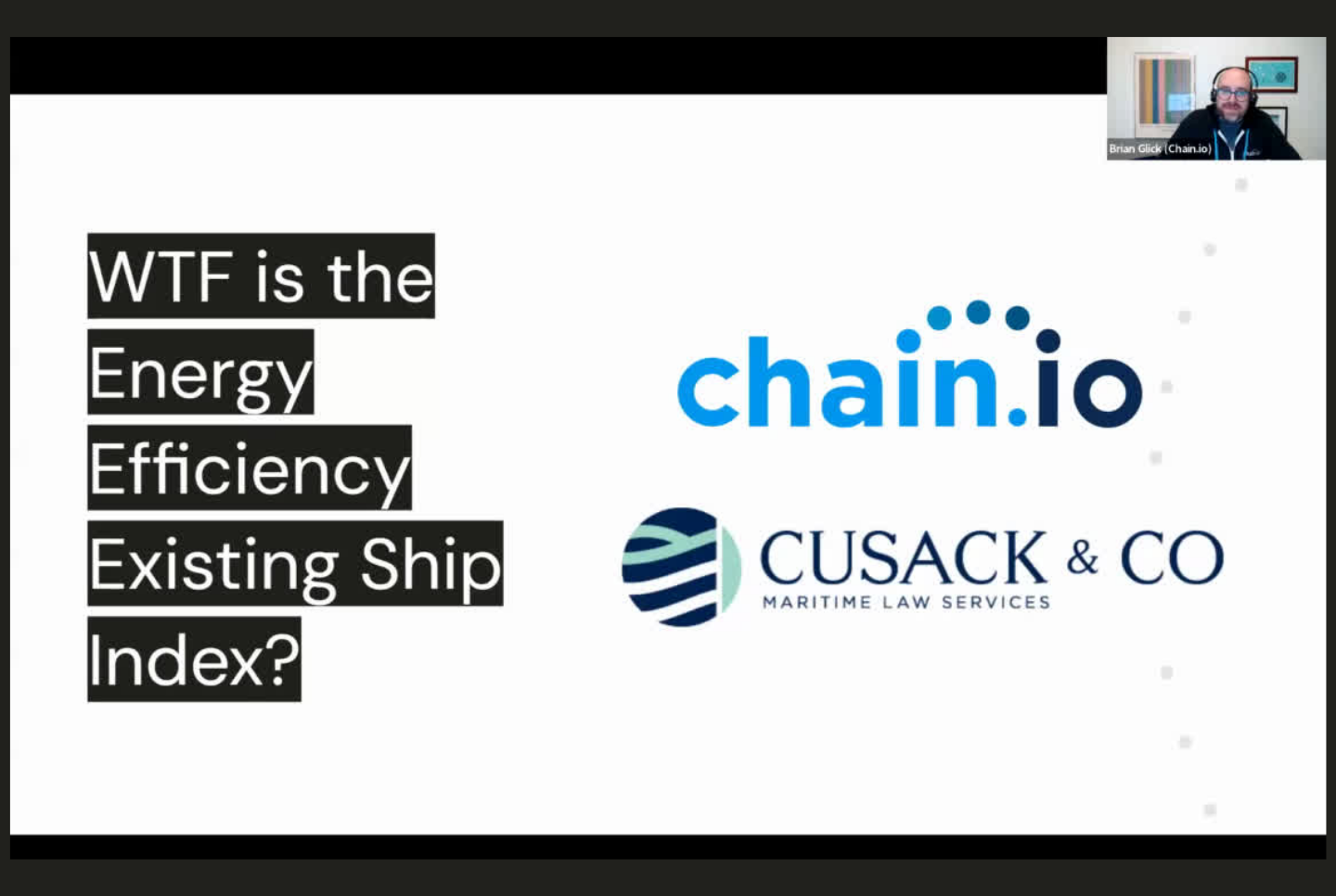Brian Glick, CEO of Chain.io, sat down with Alison Cusack, Principal Lawyer at Cusack and Co, to understand exactly what the Energy Efficiency Existing Ship Index (EEXI) is and how supply chain professionals can be prepared. Listen to their full discussion and read the overview below.

What is the Energy Efficiency Existing Ship Index?
The Energy Efficiency Existing Ship Index (EEXI) is a measure introduced by the IMO to reduce the greenhouse gas emissions of ships.
Rating and Certification
EEXI categorizes ships based on their energy efficiency, assigning them a rating from A to E. This system mirrors the familiar energy efficiency labels seen on appliances, indicating a vessel’s environmental performance.
By 2023, every ship will need to undergo an annual survey, assessing its CO2 output to earn an International Energy Efficiency certificate. This certificate is more than a mere accolade; it's a vessel's ticket to trade in an increasingly eco-conscious global marketplace.
Global Impact and Compliance
Ports are likely to be more welcoming to the higher rated ships (A-C), effectively barring high-emission vessels from their harbors.
The IMO hopes these ratings will help them reach global targets: a 20% reduction in greenhouse gases by 2030, with a vision of achieving net-zero emissions by 2050. These targets underscore the industry’s broader commitment to environmental stewardship and operational excellence.
Energy Efficiency Existing Ship Index Compliance
For carriers, the EEXI ushers in a new era of accountability. They must now ensure their fleets undergo strict evaluations and adhere to green compliance measures, while managing the potential for significant insurance liabilities tied to environmental performance.
For forwarders and NVOCCs, it's time to have conversations about sustainability and rankings. They should be asking about the EEXI rating for a fleet so they can recommend the greenest vessels and lanes to their customers.
For shippers and BCOs, the EEXI will help them stay informed and prepared for scope 3 reporting. Knowing the ranking of the ship their goods are being transported on can help them better estimate and calculate their scope 3 emissions.
Shippers play a crucial role in this dynamic, influencing the industry by choosing vessels based on their EEXI ratings, which in turn affects their carbon emissions reporting. With the European Union incorporating shipping into its carbon cap and trade system, the financial implications for non-compliant vessels are set to deepen.
As stakeholders navigate these waters, armed with data and a clear understanding of EEXI, they can leverage their influence to promote environmental integrity within the industry. It’s a collective journey, with each participant playing a part in shaping a sustainable future for maritime trade.
Schedule a meeting with our team to talk through the EEXI and how you can be prepared.
Book a Call